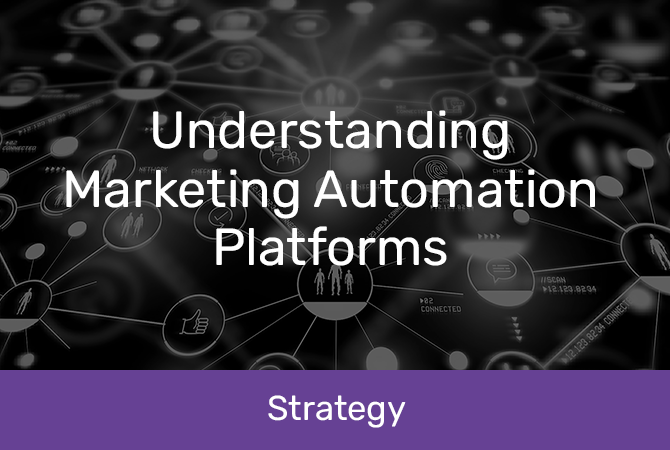
Understanding Marketing Automation Platforms
not sure how to pick the right platform? we help you get started
Automation platforms can be a game-changer for overstretched, under-resourced marketing teams, but with so many platforms on the market, how do you choose the best solution?
Here’s how to define your must-haves and find a platform that fits your business.
key points to consider when picking your platform 
A few years ago, marketing automation was an emerging area with few provider options. It’s now a well-established specialisation – and there are plenty of software platforms to choose.
While this is a positive sign of growth in the industry, it can also make it more difficult to move toward automation. Before you reap the benefits of your investment, you need to choose an automation platform and an implementation partner to guide you through the process.
At Datamine, we’re platform-agnostic, working with any automation platforms that fit our clients’ needs. We have experience with all the major platforms – each one offers a range of features and benefits, so choosing yours really comes down to your requirements.
Our advice? Don’t worry about the biggest brand name, the flashiest features or the platform with the most customers. Instead, focus on your business goals and your automation must-haves.
Here are some key points to consider:
-
Integration - Your automation platform needs to seamlessly interact with other software used by your team – from CRM to business management systems.
-
UI - All the functionality in the world won’t help if the platform is too complicated to use – look for an intuitive, user-friendly platform that your team will feel confident using.
-
Support services - Support is crucial, not just during implementation and training but throughout the life of your platform. Look for a vendor that offers ongoing support, and check the details – does it offer its own support or use a third party? Is it 24/7 support or limited to business hours?
-
Price - As with any business decision, price is also a consideration. Pricing can be complicated, with some platforms charging by the user and others upping the price after a year of service – so look carefully at the fine print before deciding.
a closer look at automation platforms
No one platform works for everyone. It comes down to your goals, your team’s capability and your budget. We’ve looked at some of the leading platforms on the market right now – but there are plenty of other options that could be a better fit for your business.
Here’s some guidance to get you started:
Adobe Campaign 
Adobe is a favourite with B2B thanks to its sales-centric features – prioritising leads, rich customer insights and smart analytics to help you develop powerful nurture journeys. It’s also highly customisable, with cohesive multi-channel campaign functionality, giving it broad appeal.
Benefits:
- Highly customisable workflow and data processing
- Seamless integration with other Adobe software
- Sophisticated dynamic content and complex data targeting
- Strong reporting functionality
- Cohesive multi-channel campaigns, including email, SMS, direct mail and push notifications
Downsides:
- Longer start-up period – can take 12-15 weeks from implementation to campaign.
- Reporting functions can be complicated and less intuitive.
- Not suited to customers looking for simple functionality, as it can be complex to use.
- Post-sale support is lacking.
Acoustic 
Acoustic (formerly known as IBM Watson Campaign Automation) offers powerful automation and seamless integration with several other marketing platforms. The platform gives you the tools to build creative, dynamic content, track customer actions online, trigger automated responses and get deep insight into campaign performance.
Benefits:
- Quick implementation – around eight weeks to build your first campaign
- Integration with Acoustic Exchange and other systems, with scalable data flows
- Drag-and-drop email building lets anyone create advanced templates.
- Wide range of features and functions to help the marketer deliver and automate
- Powerful segmentation and personalisation
- Seamless integration with Acoustic Content management and Tealeaf digital experience
- Deep dive insights through the UI and downloadable reports
Downsides:
- Not as simple to operate as other platforms
- Standard rather than sophisticated audience management
- Reporting can be slow and less intuitive
- Support services are patchy
Braze 
Flexible and customisable, Braze calls itself an ‘ecosystem’ of integrated tools rather than a single, static platform. The central platform integrates with a raft of mobile apps and websites, making it easy to build the specific functionality you need. Mobile-friendly and intuitive, Braze prioritises testing and feedback so that you can adjust campaigns in real-time.
Benefits:
- Painless integration with mobile apps and websites via SDK
- Data and action at a fast pace through SDK data stream
- Dedicated support team
- Comprehensive training within the platform
- Simple dashboard summary of campaign performance
- Overall, UI is intuitive and simple to use.
- Continually asking for feedback and improving features
Downsides:
- Reporting and analytics aren’t as powerful as competitors
- No live view of individual customer actions
- Some tools are less intuitive, particularly for new users
- Lack of tiered pricing puts it out of reach for some businesses
Ready to scope out your perfect platform? Get in touch with the Datamine team first – we can help you identify your must-haves, hash out your budget and pick the software to suit. From there, we can support you with implementation and your first campaign. Talk to the Datamine team to find out more.















































